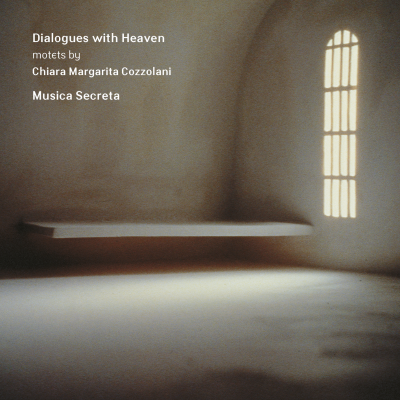Dialogues with Heaven
Dialogues with Heaven
Choose quality
CD Quality FLAC
- CD Quality ALAC
- MP3
- Regna terrae, cantate DeoComposer(s) Chiara Margarita Cozzolani
Regna terrae, cantate Deo
04:27$1.80 - Colligite, pueri, floresComposer(s) Chiara Margarita Cozzolani
Colligite, pueri, flores
07:39$2.70 - Tu dulcis, O bone JesuComposer(s) Chiara Margarita Cozzolani
Tu dulcis, O bone Jesu
06:08$1.80 - Quid, miseri, quid faciamusComposer(s) Chiara Margarita Cozzolani
Quid, miseri, quid faciamus
07:41$2.70 - Maria Magdalene stabatComposer(s) Chiara Margarita Cozzolani
Maria Magdalene stabat
08:48$2.70 - Ave mater dilectissimaComposer(s) Chiara Margarita Cozzolani
Ave mater dilectissima
06:30$1.80 - Psallite, superiComposer(s) Chiara Margarita Cozzolani
Psallite, superi
06:34$1.80 - O caeli civesComposer(s) Chiara Margarita Cozzolani
O caeli cives
07:13$2.70 - Venite, sodalesComposer(s) Chiara Margarita Cozzolani
Venite, sodales
06:25$1.80
Total running time: 61 minutes.
Album information
Dramatic & devotional music by Chiara Margarita Cozzolani, a 17th century nun from the convent of Santa Radegonda in Milan winningly sung by the glorious Musica Secreta.
Cozzolani, who was born into an ‘upper-middle-class’ family in Milan on 27 November 1602, and (as had her older sister) took her vows at the convent most famous for music in the city, Santa Radegonda, in 1620. She achieved such fame in her day that several collections of her music were published in Venice.
The small-scale motets on this recording, for various combinations of voices with basso continuo, are taken from two Venetian editions of 1642 (Concerti sacri) and 1650 (Salmi a otto concertati). Despite the nominal enclosure of Cozzolani’s religious house, her compositions were very much open to their musical environment; they share some features of north Italian motet writing in the decade preceding their appearance in print. They also show the changes in devotional life at the time, and in a few cases point to the traditions of Cozzolani’s convent and order as a whole.
Many of these pieces are premiere recordings.


